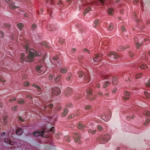The impact of the half-lives of Jak inhibitors isn’t well understood. “We’re in the generation of small molecules again,” Dr. O’Shea said. “We’ve been thinking about biologics for so long. But small molecules have varying half-lives and that’s relevant for drugs like tofacitnib and baracitinib. So we need to be thinking about … how long [we’re] going to be inhibiting each of these Jaks.”
A key question that needs to be answered is how to get the maximum benefit with the fewest side effects.
“Are we treating patients in the optimal way with the right schedules of these drugs?” Dr. O’Shea said.
In a trial of oclacitinib, a Jak inhibitor approved for itching in dogs, researchers used a tapering schedule, with big doses at the outset and then a taper—which Dr. O’Shea noted has not been done in a human trial. “What’s the optimal dose of a Jak inhibitor for any given patient? I think that’s someplace where we can do more work in the future.”
Jakinibs come with concerns about infections and whether they increase risk of tumor growth. With the wide scope of kinase inhibition, Dr. O’Shea said, it might seem that the side effect risk is worse than it is. But because Jaks are present in only one of the seven “cytokine receptor superfamilies”—cytokine receptor Types I and II—jakinibs leave a lot of signaling undisturbed.
“You’re inhibiting a number of Type I/Type II cytokine receptors, and the good news is that that might be contributing to the efficacy [of treatment] in rheumatoid arthritis,” Dr. O’Shea said. “And the reason you don’t have more infections is that you have the possibility to signal through all these other cytokine receptors to preserve some degree of immune homeostasis.”
Pain in OA
Najia Shakoor, MD, associate professor of medicine of rheumatology at Rush University Medical Center, who has studied pain and biomechanics in osteoarthritis, said the subject of pain in OA is still vexing.
Dr. Shakoor said she is perplexed when a patient with severe disease comes to her office but reports very little pain, but another with only slight changes on X-ray reports a lot of pain.
“The problem is, we still don’t truly understand what causes pain in osteoarthritis,” Dr. Shakoor said. “This is a huge area of research in osteoarthritis today.”
A fairly new development, Dr. Shakoor said, is that OA has started to be thought of as a chronic pain condition, with factors similar to other chronic pain diseases, including “central sensitization,” in which the central nervous system “takes over,” perpetuating pain. This idea could play a new role in trying to treat OA.


